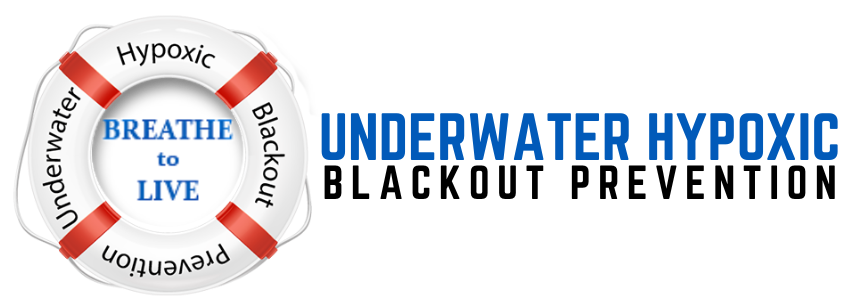With the rise in popularity of alternative wellness practices that include radical breathwork and breath-holding techniques, UHBP has seen a spike in incidences and fatalities due to Underwater Hypoxic Blackout.
Swimmers, divers, and wellness enthusiasts should be aware of the life-threatening risks associated with some popular breathing exercises, especially those involving hyperventilation and breath-holding.
It is extremely dangerous to practice hyperventilation or breath-holding exercises of ANY kind in water.
WHAT IS HYPERVENTILATION?
Hyperventilation is the process of rapid and deep breathing that can lower levels of carbon dioxide in the bloodstream.
WHAT IS HYPOXIC BLACKOUT?
Hypoxic blackout occurs when the body is deprived of oxygen and carbon dioxide. (Carbon dioxide is the chemical that tells your brain it’s time for you to breathe.)
WHY IS HYPERVENTILATION DANGEROUS?
Hyperventilation depletes carbon dioxide levels, increasing the risk of hypoxic blackout. A person who hyperventilates, intentionally or unintentionally, is always at risk of fainting or “blacking out.”
WHY IS HYPERVENTILATION IN OR AROUND WATER DANGEROUS?
The dangers associated with hyperventilation are exacerbated when performed in water. When a person blacks out while doing breathwork or breath-holding in water, drowning can and will take place unless the victim is rescued immediately.
““When you practice hyperventilation in a water environment, you’re essentially playing with your life.” ”
But wait, there’s more…
Hyperventilation and breath-holding, in or outside of the water, can trigger underlying health conditions one may not be aware of.
Engaging in radical breath-holding exercises can trigger underlying health conditions like seizure disorders or long QT syndrome.
These conditions can lead to sudden cardiac arrest, particularly in a water environment. Some preexisting health issues may not become evident until triggered by an event such as hyperventilation or prolonged breath-holding (meaning an individual will not know they have an underlying health problem until it’s too late.)
Breathing regimens that encourage forms of hyperventilation and breath-holding can be catastrophic.
Underwater Hypoxic Blackout Prevention advises against radical breathing regimens that promote hyperventilation and breath-holding. We believe that safety should always be the priority, and advocating for practices that endanger lives is a step in the wrong direction.
IS ALL BREATHWORK DANGEROUS?
No. Not all forms of breath-control exercises are dangerous. For example, Box Breathing or “Square Breathing” is a safe and effective alternative. Individuals can also enjoy guided relaxation meditations. When practicing breathwork or meditations of any kind, it is essential to do so in a controlled and safe environment, away from water.
In conclusion, the dangers of hyperventilation and breath-holding exercises in water cannot be stressed enough.
Underwater Hypoxic Blackout Prevention's message is clear: prioritize safety, responsible training, and education.
Engaging in risky activities in the water is a gamble with dire consequences. By heeding these warnings, we can protect lives and ensure that water-related activities remain enjoyable and safe for everyone.




